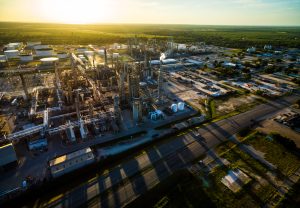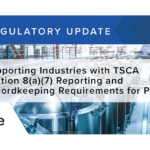
Environmental site assessments are essential for understanding and mitigating potential risks associated with land development projects. In the case of Prosper, a comprehensive Phase 2 assessment is conducted to gain a deeper understanding of the site’s environmental conditions. This article will explore the various components, processes, and implications of Prosper Phase 2 environmental site assessments, providing valuable insights for developers, investors, and environmental professionals.
Understanding Phase 2 Environmental Site Assessments
When it comes to assessing environmental risks, Phase 2 assessments play a crucial role. Unlike Phase 1 assessments, which provide a preliminary evaluation of a site’s environmental condition, Phase 2 assessments involve more detailed investigations. These assessments are conducted when potential contamination is suspected or identified during the Phase 1 assessment.
Key Components of Phase 2 Assessments
A Phase 2 assessment typically consists of three key components:
- Initial Site Investigation
- Sampling and Analysis
- Risk Assessment and Evaluation
The initial site investigation involves examining the site’s history, including previous land uses, potential contaminants, and nearby environmental features that could influence the site’s condition. This step helps to focus subsequent sampling efforts in areas of potentially higher contamination risk.
Sampling and analysis form the core of Phase 2 assessments. Environmental professionals collect soil, water, and air samples from the site, which are then sent to certified laboratories for analysis. These laboratory results provide crucial data on the presence and concentration of contaminants, enabling a comprehensive evaluation of potential risks.
Once the laboratory analysis is complete, a risk assessment and evaluation is conducted. This step involves comparing the contaminant levels found at the site with applicable regulatory standards and guidelines. By examining the potential human health and ecological risks posed by the contaminants, environmental professionals can develop appropriate mitigation strategies.
Importance of Phase 2 Assessments in Environmental Studies
The significance of Phase 2 assessments cannot be overstated. These assessments provide crucial information for environmental studies, helping to identify potential risks and develop suitable remediation strategies. Without a thorough understanding of contamination levels and associated risks, developers and investors may face significant financial, legal, and reputational consequences.
Moreover, Phase 2 assessments also contribute to the overall knowledge and understanding of environmental impacts. By conducting detailed investigations and analysis, environmental professionals can uncover valuable insights into the behavior and fate of contaminants in different environmental settings. This knowledge can then be applied to future assessments and remediation efforts, improving our ability to protect the environment and human health.
Furthermore, Phase 2 assessments often involve collaboration between various stakeholders, including environmental consultants, regulatory agencies, and property owners. This collaborative approach ensures that all parties have a comprehensive understanding of the site’s environmental condition and can work together to develop effective solutions. It also promotes transparency and accountability, fostering trust and confidence in the assessment process.
In conclusion, Phase 2 assessments are a critical step in understanding and managing environmental risks. Through detailed investigations, sampling, analysis, and risk evaluation, these assessments provide valuable information for environmental studies and help guide remediation efforts. By conducting thorough assessments, we can protect both the environment and human health, ensuring a sustainable future for all.
The Process of Prosper Phase 2 Environmental Site Assessments
The process of Prosper Phase 2 environmental site assessments involves several stages, each contributing to a comprehensive evaluation of the site’s environmental condition.
Initial Site Investigation
During the initial site investigation, environmental professionals delve into the site’s history, reviewing past land uses, potential contaminant sources, and nearby environmental features. This information helps to guide the subsequent sampling and analysis efforts.
Sampling and Analysis
Sampling and analysis form the core of Prosper Phase 2 assessments. Environmental professionals collect soil, water, and air samples from various areas of the site, focusing on potentially higher contamination risk areas identified during the initial site investigation. These samples are then rigorously analyzed by certified laboratories to determine the presence and concentration of contaminants.
Risk Assessment and Evaluation
With the laboratory results at hand, environmental professionals carefully evaluate the identified contaminants against applicable regulatory standards and guidelines. This risk assessment and evaluation allow for an in-depth understanding of the potential human health and ecological risks posed by the contaminants present at the site.
Interpreting the Results of Phase 2 Assessments
Interpreting the results of Phase 2 assessments is a crucial step in understanding the implications of the findings. It involves analyzing the contamination levels and assessing their potential impact on human health, the environment, and development plans.
Understanding Contamination Levels
Contamination levels identified during Phase 2 assessments provide vital information for developers and investors. By understanding the extent and concentration of contaminants, stakeholders can determine the appropriate remediation strategies and associated costs. Additionally, this knowledge allows for effective planning to minimize potential risks during site development and operation.
Implications of Assessment Findings
The findings of Phase 2 assessments have far-reaching implications for developers, investors, and the surrounding community. High contamination levels may impact property values, delay development projects, or attract regulatory scrutiny. Conversely, low contamination levels provide reassurance and support timely project execution. Understanding assessment findings allows stakeholders to make informed decisions, balancing environmental responsibility, legal obligations, and project economics.
Mitigation Strategies in Phase 2 Environmental Site Assessments
Following the interpretation of assessment results, the development of appropriate mitigation strategies is critical for successful project execution. Prosper Phase 2 environmental site assessments focus on identifying practical and effective solutions, ensuring that potential risks are minimized.
Remediation Options
Based on the identified contaminants and their concentrations, various remediation options can be considered. These options may include excavation and removal, containment strategies, bioremediation, or advanced treatment technologies. Environmental professionals evaluate the feasibility, costs, and environmental effectiveness of each option to determine the most suitable approach for the specific site.
Monitoring and Maintenance Plans
Once remediation actions have been implemented, ongoing monitoring and maintenance plans are crucial to ensure the long-term sustainability of the site. These plans incorporate strategies for regular sampling and analysis, contaminant monitoring, and maintenance of engineered barriers. Ongoing monitoring provides essential data to confirm the effectiveness of remediation efforts and to address any emerging concerns promptly.
Regulatory Compliance and Phase 2 Assessments
Meeting environmental standards and complying with applicable regulations is of paramount importance in Phase 2 assessments. Prosper environmental site assessments are conducted in accordance with local, state, and federal regulations, ensuring the validity and acceptance of assessment findings.
Meeting Environmental Standards
Environmental standards and regulations set acceptable limits for contaminants in soil, water, and air, safeguarding human health and the environment. Compliance with these standards is essential for ensuring the safety and sustainability of development projects. Prosper Phase 2 assessments prioritize meeting these environmental standards, facilitating the successful completion of projects.
Legal Implications and Responsibilities
Failure to perform due diligence through Phase 2 assessments can have significant legal and financial consequences. Non-compliance with environmental regulations may result in penalties, litigation, and reputational damage. Developers and investors have a responsibility to prioritize environmental sustainability and conduct thorough assessments to minimize potential risks and fulfill legal obligations.
In conclusion, Prosper Phase 2 environmental site assessments play a crucial role in evaluating and mitigating potential risks associated with land development projects. By investigating contamination levels, interpreting assessment findings, developing mitigation strategies, and ensuring regulatory compliance, stakeholders can make informed decisions, protect the environment, and achieve successful project outcomes.
Understanding the complexities and potential risks of land development is crucial for any project’s success. If you’re looking for a partner to guide you through the intricate process of Phase 2 Environmental Site Assessments, look no further than ESE Partners. Our experienced team of environmental engineers and scientists is dedicated to providing innovative and sustainable solutions that not only meet regulatory obligations but also contribute to the community’s quality of life. With offices across Texas, we’re well-equipped to support your environmental assessment, remediation, and compliance needs. Don’t let environmental challenges hinder your progress. Request A Proposal today and let ESE Partners help responsibly move your business forward.








